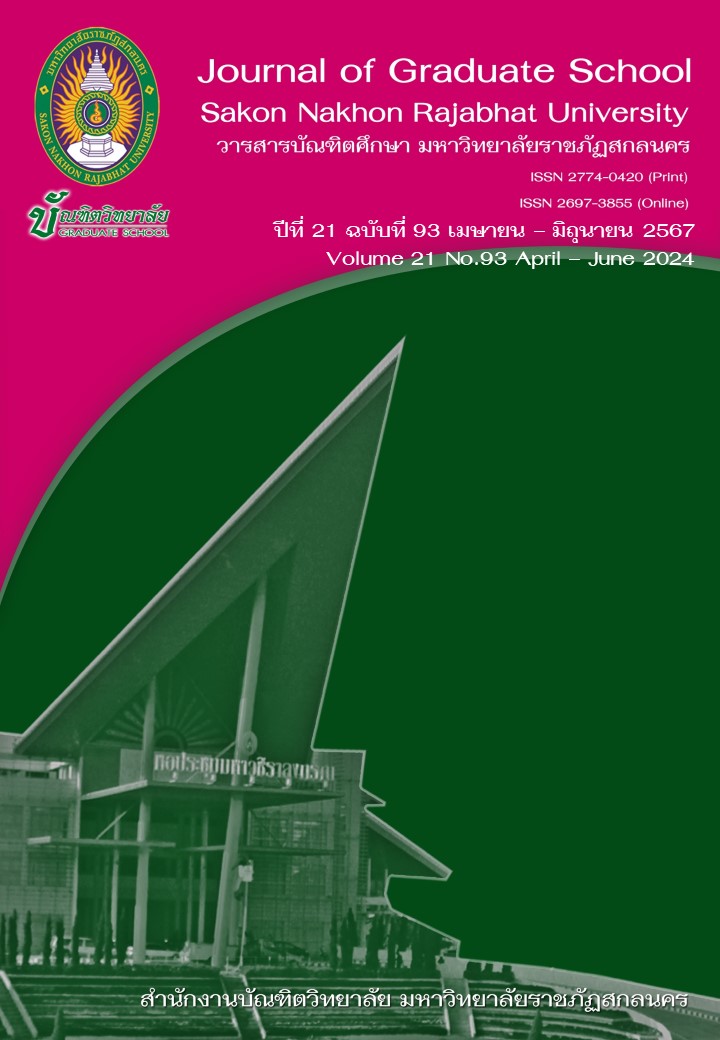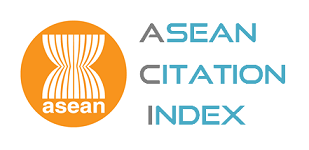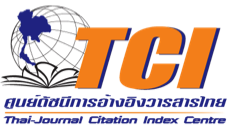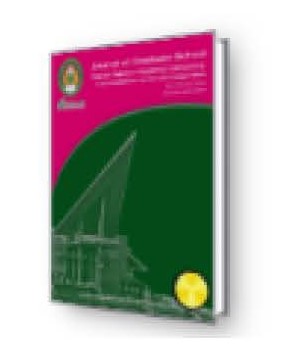LEARNING MANAGEMENT BASED ON INQUIRY METHOD AND SIMULATIONS TO IMPROVE CRITICAL THINKING SKILLS AND PROBLEM-SOLVING SKILLS OF MATHAYOMSUKSA 1 STUDENTS
Keywords:
Inquiry Methods, Simulations, Critical Thinking Skills, Problem-Solving SkillsAbstract
The purposes of this research were to 1) compare the learning achievement in science of Mathayomsuksa 1 students before and after learning through the learning management based on inquiry method and simulations, 2) compare students’ critical thinking skills before and after the intervention, and 3) compare students’ problem-solving skills before and after the intervention. The sample group, obtained through purposive sampling, comprised a class of 15 Mathayomsuksa 1 students at Ban Kham Thale So School, Kham Thale So District, Nakhonratchasima Province, in the second semester of the 2022 academic year. The research tools were lesson plans based on inquiry methods and simulations. The instrument for data collection included a learning achievement test, and an assessment test measuring critical thinking skills and problem-solving skills.
The results showed that the learning achievement after the intervention reached a mean of 26.00 and a standard deviation of 1.73, accounting for 65 percent, indicating the post-learning achievement score was significantly higher than that before the intervention at the .05 level of significance. The critical thinking skills achieved a mean of 14.73 and a standard deviation of 1.09, or 73.67 percent. The mean of problem-solving skills was equal to 13.53 and the standard deviation of 1.06, accounting for 67.67 percent. Critical thinking and problem-solving skills after the intervention were higher than those before the intervention at the .05 level of significance.
References
จิรพันธุ์ ทัศนศรี. (2548). การเปรียบเทียบผลสัมฤทธิ์ทางการเรียนและเจตคติต่อวิชาวิทยาศาสตร์ ของนักเรียนช่วงชั้นมัธยมศึกษาปีที่ 3 ที่ได้รับการสอนโดยรูปแบบซิปปากับแบบสืบเสาะหาความรู้. ปริญญานิพนธ์ กศ.ม. กรุงเทพฯ: มหาวิทยาลัยศรีนครินทรวิโรฒ.
ทิศนา แขมณี. (2552). รูปแบบการเรียนการสอนทางเลือกที่หลากหลาย. กรุงเทพฯ: จุฬาลงกรณ์มหาวิทยาลัย.
บุญนํา อินทนนท์. (2551). การศึกษาผลสัมฤทธิ์ทางการเรียนวิทยาศาสตร์และความสามารถในการแก้ปัญหาทางวิทยาศาสตร์ของนักเรียนชั้นมัธยมศึกษาปีที่ 3 โรงเรียนโยธินบำรุง ที่ได้รับการจัดการเรียนรู้โดยใช้ปัญหาเป็นฐานและการจัดการเรียนรู้แบบสืบเสาะหาความรู้. กรงเทพฯ: มหาวิทยาลัยศรีนครินทรวิโรฒ.
เสริมศรี ลักษณศิริ. (2540). หลักการสอน. กรุงเทพฯ: คณะครุศาสตร์ วิทยาลัยครูสวนดุสิต.
ไสว ฟักขาว. (2544). การจัดการเรียนการสอนที่เน้นผู้เรียนเป็นศูนย์กลาง. กรุงเทพฯ: เอมพันธ์.
Bybee, R., & et al. (2006). The BSCS 5E Instructional Model: Origins and Effectiveness. Colorado Springs, CO: BSCS.
Chaitiang, S. (2013). Effects of using the 7E instructional model in chemistry on learning achievement critical thinking ability and science process skill for Mathayomsuksa 6 students at Noensaiwittayakom School Trat Province (Master thesis). Chonburi: Burapha University.
Chatkup, S., & Chuchat, U. (2011). Critical thinking. Bangkok: Office of the Education Council.
Cosgrove, M. (1995). A study of science–in–the making as students generate an analogy for electricity. International Journal of Science Teaching, 17(3), 295–310.
Derry, G. N. (1999). What science is and how it works. Princeton: Princeton University Press.
Devries, R., & Kohlberg, L. (1992). Constructivist Early Education and Comparison with Other Programs. Washington, DC.: NAEYC.
Edgar Dale. (1969). Audiovisual method in teaching. New York: The Dryden Press.
Felder, R. M., & Brent, R. (2009). Active Learning: An Introduction. Retrieved from http://www4.ncsu.edu/unity/lockers/users/f/felder/bublic/Papers. May 25th, 2021.
Ganguly, I. (1995). Scientific thinking is in the mind’s eye. In: Selected readings from the annual conference of the international visual literacy association (pp. 241–250), Chicago.
Good. (1973). Dictionary of Education. New York: McGraw–Hill Book Company.
Good, Carter V. (1974). Dictionary of Education. New York: McGraw–Hill Book Company.
Khine, M. S., & Saleh, I. M. (2011). Dynamic modeling: Cognitive tool for scientific inquiry. Springer, New York, NY.
Moonkam, S., & Moonkam, O. (2009). Learning Method: For Development of Thinking. (8thed.). Bangkok: Pappim.
National Research Council. (2012). A Framework for K–12 Science Education: Practices, Crosscutting Concepts, and Core Ideas. Washington, DC: National Academy Press.
Neilson, D., Campbell, T., & Allred, B. (2010). Model–based inquiry in physics: A buoyant force module. The Science Teacher, 77(8), 38–43.
Oh, P. S., & Oh, S. J. (2011). What Teachers of Science Need to Know about Models: An overview. International Journal of Science Education, 33(8), 1109–1130. doi: 10.1080/09500693.2010.502191.
Passmore, C., Stewart, J., & Cartier, J. (2009). Model–based inquiry and school science: Creating connections. School Science and Mathematics, 109(7), 394–402.
Sinlarat, P., et al. (2015). Thinking principle. Bangkok: Dhurakij Pundit University.
Tanya, S. (2012). Educational Research Methodology. Nakhon Ratchasima: Nakhon Ratchasima Rajabhat University.
Veenman, M. V. J., Elshout, J. J., & Busato, V. V. (1994). Metacognitive mediation in learning with computer–based simulations. Computers in Human Behavior, 10, 93–106.
Yasukham, T. (2012). Enhancement of learning achievement and critical thinking skills science by using inquiry learning activities of chemical reaction rate. Journal of Education Naresuan University, 14(2), 23–33.
Downloads
Published
How to Cite
Issue
Section
License
Copyright (c) 2024 Journal of Graduate School Sakon Nakhon Rajabhat University

This work is licensed under a Creative Commons Attribution-NonCommercial-NoDerivatives 4.0 International License.
บทความทุกบทความที่ตีพิมพ์ในวารสารบัณฑิตศึกษา มหาวิทยาลัยราชภัฏสกลนคร ถือว่าเป็นลิขสิทธิ์ของบัณฑิตวิทยาลัย มหาวิทยาลัยราชภัฏสกลนคร










